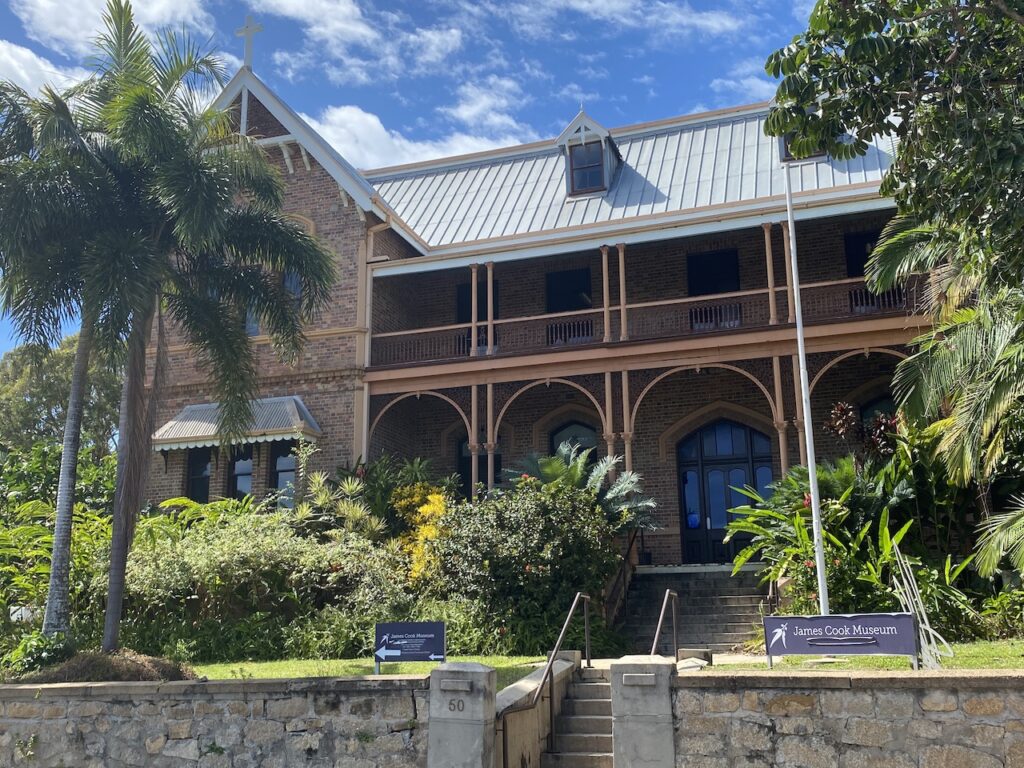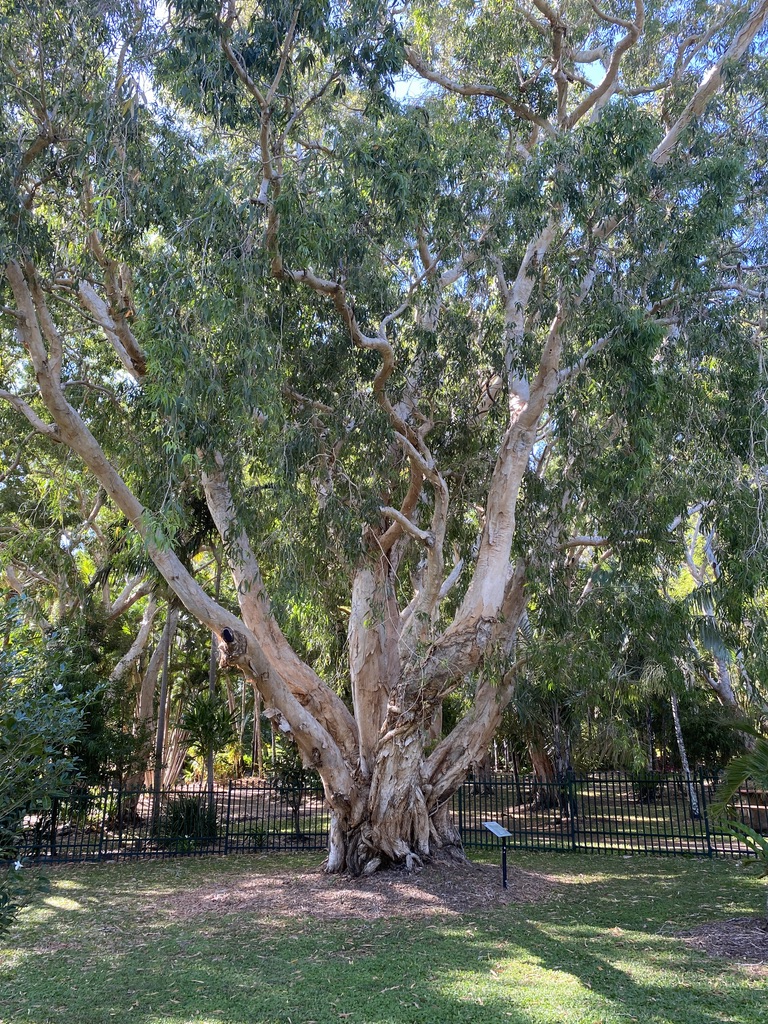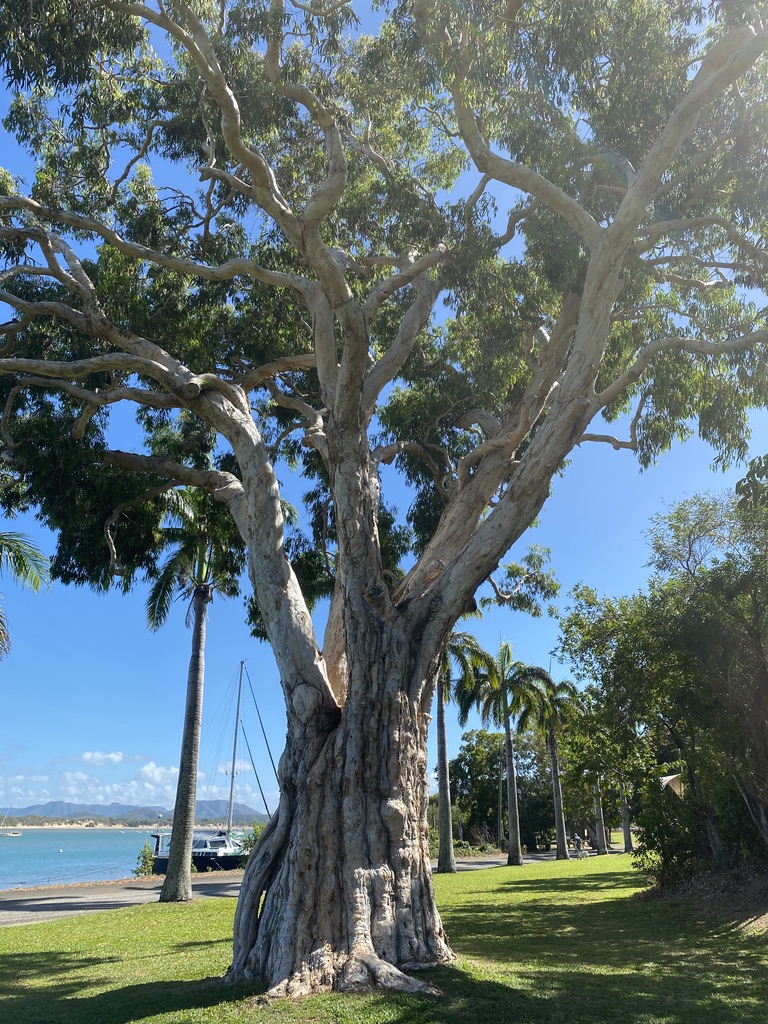Cooktown represents the most northern point we have travelled in Australia thus far. Like others do when up this way, we could have continued our trip to the tip of Cape York. But for now, not for us. Maybe next time when we are better prepared.
Everywhere you look in Cooktown there is a reminder of Lieutenant Cook, the repairs to the Endeavour and the botanical and faunal collections of Banks and Solander. The highlight of Cooktown, for us, was the James Cook Museum set in a stunning nineteenth-century Sisters of Mary restored convent.

The Botanic Gardens are a treat and a testament to plantings from 1878 and recognition of growing various introduced and native species in the tropics. By 1917, however, a decline in wealth and population at Cooktown led to the decline of the gardens and they fell into disrepair. For 60 years, nature reasserted itself. Fire and cyclones ravaged the plantings and many introduced species spread across the stately lawns. In 1979 the site was cleared for a festival. Evidence of the garden’s past glory was revealed and a restoration program commenced bringing it back to its present and impressive state.

For me, all the sightseeing and beauty of Cooktown was overshadowed by what I call the ‘Cooktown Crescendo’. As I layed in bed, in the middle of the night, at a Cooktown caravan park, I heard a distant rumbling in the tree canopy, at least every hour, that became louder as it approached and then exploded, rocking the caravan. At other times, without any warning, it suddenly arrived and disappeared just as quickly.
What I am talking about is the wind. It is the one thing you read about before you arrive in Cooktown. The south-east trade winds are notorious, especially during August, when we arrive. While standing atop the exposed Mt Cook or the lookout at Grassy Head, you experience the continuous strong winds.

However, at the caravan park, we were protected from the winds by the towering Mt Cook to the east. Or so I thought. On the whole, it is relatively calm and sheltered below Mt Cook, but it doesn’t stop sudden and sporadic gusts of wind, especially at night. Perhaps it has something to do with the anabatic effect of Mt Cook where the wind hits the eastern side of the mountain and spills over the top creating gusts below.

Talk to any caravanner, and their one fear is unexpected and strong gusts of wind while the awning is up. Nothing makes you more nervous in the middle of the night than to hear the wind gusts rumbling towards you, rocking the van from side to side. It conjures images in your mind of the awning about to be violently uplifted by the wind passing underneath. Thankfully the crescendo and the actual wind gust at the van last for less than 10 seconds. I am also grateful I got talked into fitting a decent anti-flapping kit that I diligently set up every time the awning is out.
That doesn’t stop me from having a restless sleep most nights because of the wind. By the fourth and final night, however, I became more comfortable with the crescendo, and had a night of uninterrupted sleep when I finally realised the Cooktown Crescendo was in concert with Beethoven’s Symphony No 5. You hear it building up not unlike Beethoven’s masterful, epoch-defining symphony. You may recall the symphony’s third movement with its punchy rhythm and probing legato theme which, in combination, hints that something is about to explode. As I layed in bed, I no longer heard a dangerous cyclonic blast that built up and rumbled towards us. Instead, the dark, contorted, and troubled swirling in the surrounding tree canopy was now a soothing symphonic swell. It opened up into a blast of C-major brass fanfare as the wind lifted the caravan off the ground, followed by a gentle finale as the tyres returned to earth, the rocking subsided, and the wind passed by. I fell into a deep sleep.
As we celebrate Beethoven’s 250th birthday, I have much to thank him for.
Listen to Beethoven’s 5th Symphony’s 3rd and 4th movements on the link below. The first C-major crescendo starts after the 1 minute. The best example is just after 5 minutes and a prolonged section is in the first thirty seconds in the 8th minute.

I concur with your comments about wind although we only did a day trip. It was a full on day for us and unfortunately museum wasn’t open for some reason. Was going to go back but now maybe not.
Thanks again for the lesson.
Go well
Bob n Rhonda